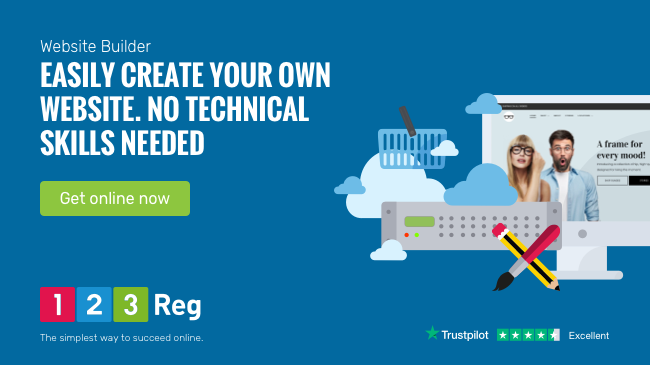2024 Guide to Starting an Online Business
Launching an online business has never been easier. You can do it without big upfront funding and there’s no need for serious tech skills. With the flexibility to set your own schedule and call all the shots, this is an opportunity to be your own boss. With just a little clever strategy it’s possible to reach a huge audience right from the get-go. Whether you’re looking for a gentle income stream on the side — or dreaming of a worldwide e-commerce empire — anything’s possible. With that, here’s our guide to starting an online business in 2024.

Why start an online business in 2024? | Come up with your business idea | Choose your business model | What type of entrepreneur are you? | Conduct market research | Write the business plan | Get the funding | Register your business | Manage your accounts | Buy the domain name | Choose your online platform | Set up shop | Start taking payments | Build your online presence
Why start an online business in 2024?
Building an online business is a great chance to do something rewarding — in more ways than one. To start with the obvious, the entry barrier is often very low. Online ventures tend to come with minimal start-up costs, compared to a bricks-and-mortar business, saving money on rent, utilities, and other associated start-up expenses. It’s a way to get a foot in the business door without reaching deep into your wallet.
For those who do already have a physical shop, going online offers a great way to increase revenue and expand, reaching new avenues and wider audiences.
You have the flexibility. As the customer base grows, you can expand operations without the constraints of physical space. You have the power to map your online business to fit exactly what you need. Whether you’re starting small with a niche product or dreaming big with a diverse range, you can up the size and complexity as you go along.
You needn’t be a tech wizard. With so many user-friendly platforms and handy tools out there, it’s possible to set up shop with only limited tech skills. Good website builders provide templates that make it utterly easy to launch a professional-looking website in minutes — then manage stock and update pages daily. If you’d prefer instant access to customers, you might try the existing marketplaces of Etsy, eBay, and others.
And there’s never been a better time to start. In fact, the UK now boasts the world’s third largest e-commerce market in the world after China and the US. Online sales account for more than a third of the total retail market in the UK, in spite of what’s going on with the economy. Online sales even increased by 36% last year. By 2025, the total domestic revenue from e-commerce is predicted to be worth £230 billion. So, if you’ve got something to share with the world, 2024 is the time to make your mark.
Finally, did we mention you can do it all from home in your pyjamas?
Come up with that business idea
So you’ve decided to start an online business. Exciting! The first step is to define your business idea. It’s about turning that spark of inspiration into a clear, actionable concept. There are several key things to think about — to guide your thought process and to help shape this vision into something tangible and viable.
First, consider the scale and commitment of the business venture. Are you looking to start a side-gig to complement your lifestyle and income, or are you aiming for a full-time enterprise that’ll become a primary focus?
Think about the core of your business: the product or service you want to offer. This is where your passion meets market demand. Is there a specific product or service you are passionate about or have expertise in? Define the niche.
Pinpoint a specific market segment and, instead of trying to serve everyone, focus on a particular group with shared interests. Tailor your products or services to meet their preferences. This approach helps your business stand out and builds stronger connections with loyal customers. Identify your passions and market gaps to find your niche effectively.
How well does the business idea align with your skills and experience? Will you need additional training or partnerships? A business idea that fits your strengths and areas of expertise is more likely to take off.

Choose your business model
There are four primary business models in e-commerce lingo. Those are:
Business-to-Business (B2B), when a businesses sell products or services to other businesses. When it comes to wholesale, a B2B might act as intermediary in a supply chain, purchasing goods in bulk from manufacturers and selling them to retailers or other businesses.
Business-to-Consumer (B2C), where a businesses sells direct to consumers. This is the biggest e-commerce business model there is — whenever we make an online purchase as an individual customer, we’re engaged in the B2C model.
Consumer-to-Consumer (C2C), when consumers sell goods or services to each other through an intermediary platform. Casual and occasional selling on eBay or Facebook Marketplace would fall into this category.
Consumer-to-Business (C2B), when consumers provide services to businesses. Switching around the B2C idea, this one is a bit oddly named, as it typically refers to freelancers selling to businesses. For example, getting paid to upload photography to Shutterstock.
Decide: What type of entrepreneur are you?
Think about what you love and what you’re good at to find a business model that fits. Understanding the dynamics can help you position your business and work out your opportunities. Whether you decide to go wholesale and manage stock yourself, or to “dropship” orders straight from supplier to customer, the choice should reflect your strengths and market positioning.
Think about your Value Delivery Method. That’s a posh way of asking how you’ll meet the needs of consumers. This choice goes beyond logistics; it shapes the entire approach to bringing value. Each type of business has its unique set of challenges and opportunities. Let’s explore the options:
➤ Wholesale (B2B Sales, Bulk Distributor)
In online wholesale, you work between manufacturers and retail businesses, offering products in large quantities at lower prices. The key to success is developing strong relationships with reliable suppliers and understanding the market demands of your customers. You’ll need a grasp of inventory management as you’ll be handling and shipping products to various locations. If selling large quantities of products at a discounted rate, primarily to retailers or other businesses, appeals to you, this might be the path for you.
➤ Dropshipping (Order Fulfilment or Inventory-less Retail)
Dropshipping is a choice for those who prefer not to hold onto the stock themselves (or don’t have the means to). Here, when a customer places an order, your role is to have the product shipped directly from the supplier to them. You don’t handle the product directly and, as such, you don’t need the storage space. Dropshipping is appealing for those looking to enter the e-commerce space without a significant upfront investment in inventory. You can focus on the marketing and selling; the supplier handles inventory and shipping. For success, you’ll need a good understanding of your target market and a strong online presence, as your main role is to attract customers and generate sales through a chosen platform. While you won’t need a warehouse, finding a reliable supplier is a must.
➤ Custom Made-to-Order (Personalised, Customisable Products)
Are you interested in offering products customised to your customer’s specifications? This could include personalised gifts, custom clothing, or made-to-order furniture. A subcategory of this is Print on Demand (POD), where you sell personalise-able items like t-shirts or mugs, made bespoke for each order.
➤ Handmade (Artisan, Craft, Bespoke)
Are you a skilled artist or craftsperson? If you enjoy creating products by hand, emphasising craftsmanship and uniqueness, Handmade is the category is for you. Your products could range from jewellery and clothing to handmade furniture and art. Perhaps you can even personalise each one to order.
➤ Used Items (Personalised, Customisable Products)
If you have a passion for sustainability and giving new life to preloved items, consider selling vintage clothing, refurbished electronics, or antique furniture.
➤ Reseller (“Arbitrage”, Retailer, Stockist)
As a reseller, you’ll purchase products from suppliers or wholesalers and sell them to customers. If you’re interested in buying products at a lower price in one market and selling them at a higher price in another, consider arbitrage.
➤ Private Label (White Label, Brand Owner, Exclusive Branding)
If branding products manufactured by others as your own sounds appealing, then private labelling is an option. You may be able to modify these products to make them unique.
➤ Affiliate Marketing (Referral Selling, Commission-Based Selling)
Do you have a knack for promoting products? In affiliate marketing, you’ll earn a commission for each sale made through your referral, often using digital platforms.
➤ Subscription Services (Box Services, Recurring Revenue Model)
If you’re interested in offering products or services on a subscription basis, providing recurring deliveries or access, consider this model. It can range from monthly beauty boxes to streaming services.
➤ Digital Products (E-Goods, Virtual Products, Downloadable Content)
If you’re inclined towards digital products, like eBooks, software, digital art, or online courses, this category might be for you. This could fall to any business model category including C2B, where, for instance, you might be uploading something online for profit.
For more, check out: Inspiring Stories from Self-Starters
Conduct market research
Once you have your business idea in place, it’s time to dig into a little market research. That means looking at trends — spots where you think you might succeed — and any challenges you might face. This research will form the basis of your business plan as you move forward, helping you to shape your product or service to meet what customers want.
Identify who your customers are. The target market, market segment, target demographic… well, there are lots of different business jargon ways to say it, but think about who would find value in what you’re offering and why they would be willing to pay for it. Understand their needs, preferences, and spending habits, and make sure that what you’re offering aligns with their expectations. Think about:
◌ The age bracket of your ideal customers
◌ The size of your target market
◌ Their location
◌ Their purchasing power (typical budget)
◌ Your competition — and how unique the solution is that you’re offering
Does your product or service solve a specific problem or make life easier for potential customers? To identify gaps in the market, start by looking for unmet needs or areas where demand might exceed supply. Online surveys can be a helpful tool when gathering this data. Find opportunities that others might have overlooked — where you can offer something valuable, special, unique. Carefully research the competition. Get a sense of your rivals — how they’re doing, what they’re doing, and what you could do differently.

Write the business plan
After settling on your business idea, the next big step is making a detailed business plan. Come up with a short summary covering your business idea, mission, and goals. You’ll find resources from various organisations to help you get started, such as the Office for National Statistics and Think With Google Research Tools, while the Prince’s Trust offers a host of materials, including its own Business Plan pack. The British Business Bank offers comprehensive materials geared towards UK start-ups.
Work out a strong plan for marketing and selling, proving how you’ll get into the market and make money. A good business plan isn’t just a guide for you; it’s also a handy tool when looking for partnerships, investments, or loans in the competitive business world of 2024.
Keep it realistic. Aim for goals that are challenging, but doable. Think about the resources you have. Whether it’s sales, getting customers, or financial plans, having targets that match your insights and abilities makes your plan more believable.
Define the Brand. Think about your brand image. Come up with a brand name that’s memorable and reflects what your business is all about. Define brand identity clearly, focusing on what sets you apart. Identify your target market and establish your brand’s unique position within it.
Get the funding
There are a lot of options when it comes to money matters. First and foremost, the government offers a Start Up Loan between £500 to £25,000, charged at a fixed interest rate of 6% per year. Many UK banks offer loans to new and small businesses. If you wish to apply for a loan, lay out a clear funding request with honest and realistic financial predictions. Be sure to understand the interest rates and potential penalties. Interest will depend on creditworthiness, the amount borrowed, and the loan term, but generally range from around 3% to 7%. Check out How to get a business loan for tips.

Another route would be to attract investors. Clearly state your money needs with a well-structured pitch, with a clear “this is what’s in it for you”. By showing a clear grasp of your financial needs and predictions, you can boost your chances of getting the backing you need.
Crowdfunding has emerged as a viable option for start-ups and entrepreneurs. In 2023, the average funding pot for rewards-based (as opposed to charitable) crowdfunding in the UK was approximately £12k. It may be possible to cover at least the initial expenses and launch costs in this way. Of course, you’ll need to create a compelling pitch that clearly communicates your business idea, goals, and the benefits of throwing money into the hat.
Register your business
It’s very tempting to say “you’ve bought a domain, now you’re in business!”. Alas, it’s not quite that simple. Once you’ve made the big decision to start your own company, there’s the legal stuff to consider. Register your business according to the structure you’ve chosen.
Needless to say, it’s vital to run your business legally — whether you’re going it alone as a sole trader, forming a partnership, or establishing a limited company. If you’re a sole trader or self-employed, you’ll need to report your earnings and pay income tax through a Self Assessment tax return to HM Revenue and Customs (HMRC). You’ll need to charge VAT on your sales and report it to HMRC. Keep detailed records of your income and expenses, as this information is crucial for accurate tax reporting.
If you’re selling products through marketplaces like Amazon or Etsy, you’ll normally operate as a sole trader, without needing to create any formal company. Nevertheless, be sure to check with Companies House and all the good resources on the gov.uk website for all the official advice on this and all other aspects of starting a business in the UK.
These steps help you establish your business’s legal status, understand your financial obligations, and make sure you’re operating your small venture or side hustle within the UK’s legal framework. Choose the setup that fits your goals and keeps your business running smoothly.
Manage your accounts
Start by opening a separate business bank account to keep personal and business cash apart, making it easier to track. The UK government offers a scheme called Small Business Rates Relief — you may be eligible if your small business only occupies one property.
There’s a whole host of free accounting apps out there. These tools make it easier to keep track of spending, handle invoices, and get ready for tax returns. Especially for small businesses, they save a lot of time and effort that would otherwise go into handling money matters. That means you can focus more on growing the business rather than on the paperwork.
Accounting apps for small business include QuickBooks, Zoho Books, Quickfile, FreeAgent, Wave Accounting, GnuCash, and VT Cashbook. Many of these are free, or mostly-free with limitations. Zoho Books is free up to the first 1,000 invoices a year, for example. Hopefully, that’ll be enough to kick off your new business in 2024.
Buy the domain name
A domain name consists of a main name together with its extension — “.net” or “.com”, for example.
When starting an online business, it’s so important to choose a combination that works. This is your digital address, but it also forms a huge part of your brand identity. That URL is likely to be your first impression on the web – it’s how people discover, remember, and interact with your online presence. Whether formal and prestigious, catchy or quirky, it needs to be memorable and unique.
Choosing the right domain name can have a big impact on trust and credibility. “co.uk” or “.uk” domains tend to be more effective for British ventures. Having said that, different extensions from “.abc” to “.xyz” can do the trick in an eye-catching and budget-friendly way.
You might even pair your name with the extension in a clever way. For example: by choosing a .guru domain if you’re a yoga instructor, .design for your graphics portfolio, or .ninja for your karate academy.
Consider choosing a .ai domain if you’re involved in artificial intelligence or technology-related fields. Just like other unique domain extensions, a .ai domain can help attract the right audience to your business or project.
A unique domain can even help businesses rank higher on search engines like Google, making them more discoverable to potential customers.
123 Reg offers hundreds domain extensions to suit any purpose, from the traditional “.com’s” to more inventive options. 123 Reg sells some of the UK’s cheapest domains, so many in-demand choices are surprisingly affordable.
Once you’ve bought your domain, you’ll want to secure it with Domain Privacy and Ownership Protection. This works to protect you from online threats, ensuring that you’re the only one able to manage your domain and make changes to it.
Customers will also want to see that you’ve got an SSL Certificate. A fundamental security feature, SSL Certificates work to confirm a website owners identity, while hiding sensitive data (when exchanging credit cards, for example). This reassures customers that their information is safe, building confidence and encouraging secure online shopping. With 123 Reg, they’re offered as standard.
For more, check out our guide, Names That Click: How to Choose the Right Domain Name
Choose your online platform
Getting to the fun stuff, now. When you’re setting up a business to sell products or services online, it’s important to pick the right place in which to do it. Choosing where to sell can make a big difference in how many people see it and how well your business does. Each option has its merits and trade-offs, so understanding your specific needs is key to making the right decision.
Let’s look at the three main options for selling online:
➤ Website builder tools
➤ E-commerce ‘CMS’ platforms
➤ Online Marketplaces
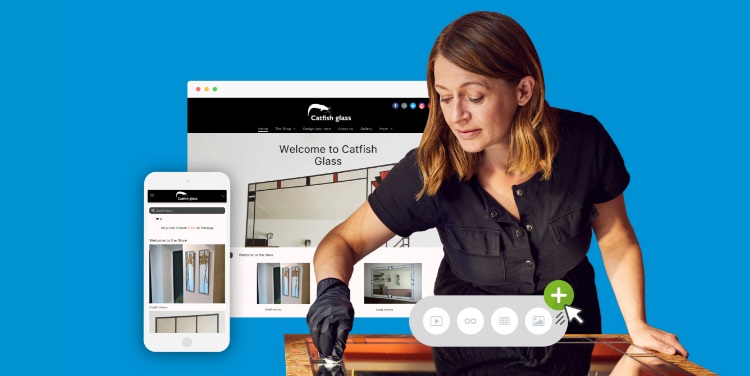
Website Builder
A good website builder tool is arguably the most effective way to get started with an online business. It’s a great choice for those who want an attractive and unique website, with a decent level of control, but without demanding too much technical skill. There’s no need for coding, for instance. And even for those who do have the web development background, a decent website tool can still be the preferred way to set up shop.
Many website builders include hosting as part of their service. That means they provide the server space where your website will be stored and made accessible to visitors on the internet.
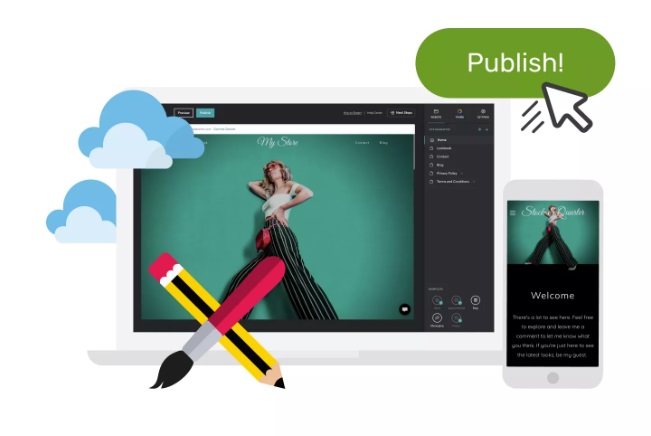
123 Reg’s Website Builder makes things easy with an intuitive interface and dozens of pre-built templates at your disposal. From there, you can customise the look and feel of your website by adding your own images, videos, colour scheme and more. Don’t have any content of your own? Not a problem, as there’s a library of copyright-free images available to build your pages.
There’s no need for sifting through overly complicated interfaces or admin panels. You can add HTML code into your pages to give your website that extra touch, if you like. But with such a user-friendly interface, you can drag and drop without the need for that kind of thing — allowing you to create a website that looks exactly how you want it to. You can have a professional online store up and running in minutes.
123 Reg gives you everything you need to get started: a domain name, an email address to match, secure protection with a free SSL Certificate, plus the website hosting bit itself. You can customise product offerings and receive various payment methods depending on the package you choose. Added to that helpful customer service and a 14-day money-back guarantee if you’re not happy, it’s a simple and budget-friendly way to get your business online.
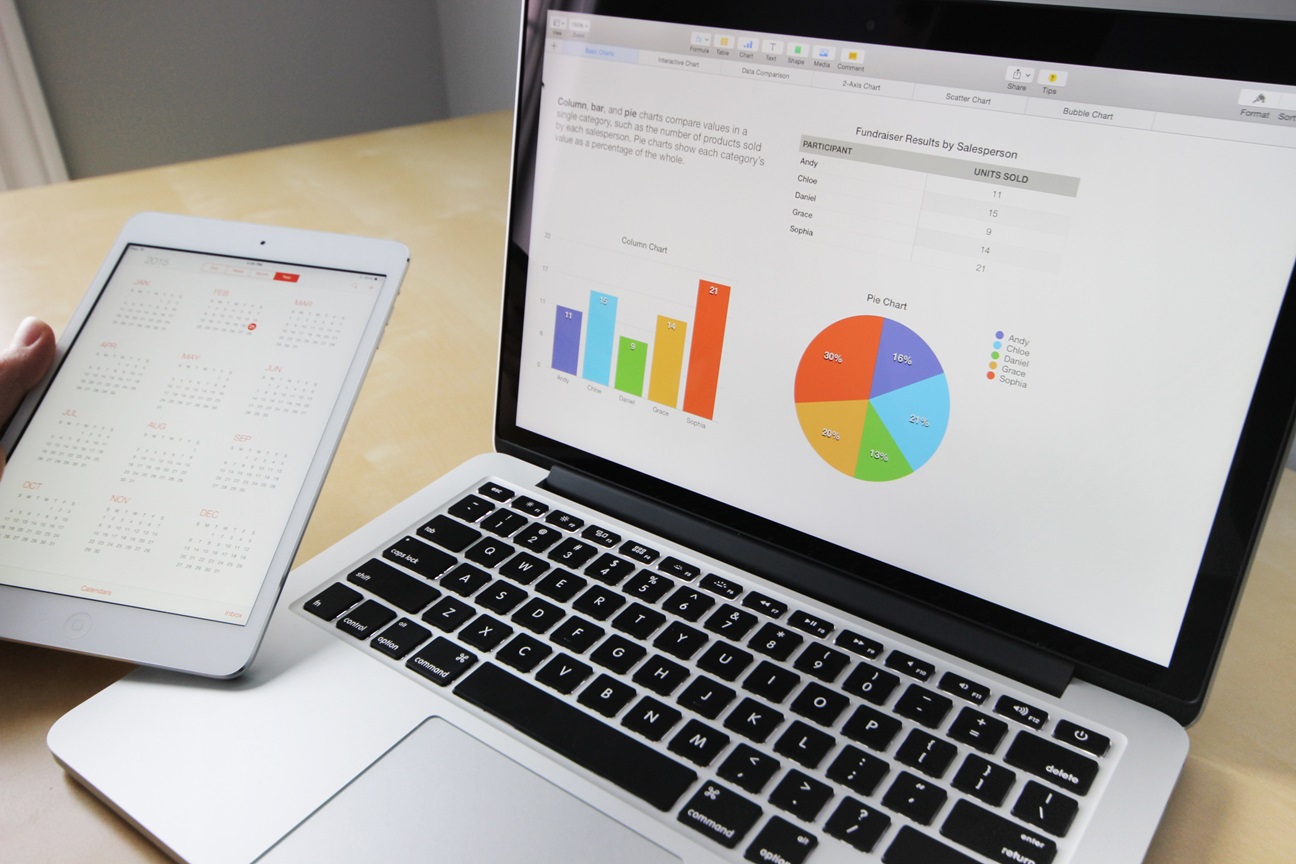
E-commerce ‘CMS’
E-commerce content management systems (CMS) are specialised software platforms designed to help businesses manage and organise online stores. Two of the most well-known e-commerce providers are Shopify and Adobe Commerce (formerly Magento). These CMS platforms are particularly geared towards larger companies.
Big corporations tend to favour e-commerce CMS platforms because they bring a lot to the table in terms of control, customisation, and detailed inventory management. They’re great when it comes to selling goods in large quantities and with worldwide logistics. Tesla, Heinz, and Nestle use Shopify, for example, whereas Nike, Coca Cola, and Ford use Adobe Commerce.
In-depth inventories are useful when a company receives a lot of individual or bespoke orders and each product requires careful tracking. Whereas a website builder tool may let you choose colour and size (of t-shirts, for example) you might want to choose a tool like Adobe Commerce if you were selling thousands of made-to-order bicycles, bespoke furniture pieces, custom desktop computers — and so on — each with multiple product numbers and other complex details.
While e-commerce CMS are powerful solutions, they do come with certain negatives. Cost would be one. This can be higher due to transaction fees and added expenses for customisations. But the main drawback that these platforms tend to demand professional-level technical expertise. On the whole, companies operating e-commerce CMS will be doing so with dedicated IT teams or through outsourcing. Naturally, this may not be a viable option for most small businesses and side-hustlers!

Online Marketplaces
Finally, there’s the existing online marketplaces, such as Amazon, eBay, or Etsy. Facebook and Instagram can also be added to that mix. These platforms are, of course, hugely popular and well-established. They can be a smart choice for getting instant access to potential buyers.
Online marketplaces tend to handle the majority of steps in the selling process. The big advantage is that you can start to sell immediately, without the need to build or market your own website. According to Glassdoor, Amazon seller salaries range from £12,481 to £18,056, but the most successful sellers can make much, much more.
On the flip side, there’s a lot of competition from rival sellers when using existing marketplaces. You’re stuck with little or no control over your brand image, beyond what your product listings say about you. Then, there’s the fees. You’ll have to weigh up whether immediate access to customers is worth the cut that the marketplace provider will take.
Let’s look at Amazon, as that’s the market leader. There are two main selling plans: the Individual plan costs £0.75 per unit sold, while the Professional plan is £25 (excluding VAT) per month, regardless of sales volume. Amazon places referral fees on each item sold, based on a percentage of the total sales price. These referral fees typically range between 8% and 15%. Amazon’s “fulfilment” fees depend on whether you choose to fulfil orders yourself or use Fulfilment by Amazon (FBA). FBA offers a flexible rate structure, charging only for the services used, without any subscription fees, contracts, or minimum inventory requirements. This can include costs for fulfilment services and storage space. Check out Amazon’s seller fee calculator for more info.
Set up shop
Assuming you’ve gone for options 1 or 2 rather than marketplace selling, it’s time to talk about website design.
Designing your landing page is a big step in setting the tone for the customer experience. This page acts like the shop window on the high street, and its design can significantly impact customer perceptions and behaviours. Start with a clean, uncluttered layout that highlights your key products or services.
Picking the right visuals for your website involves a blend of art and strategy. It’s about creating an online space that’s not only visually appealing but also enriching and easy to navigate for your visitors.
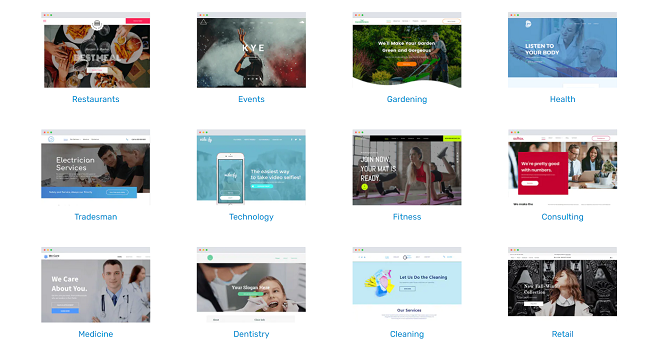
When you’re on the hunt for a theme, think about it as creating a virtual ambiance that aligns with your brand’s personality. If your products are fun and quirky, a vibrant and playful theme works wonders. Selling luxury items? Then a sleek, minimalist theme might be your best bet.
Navigation should be intuitive and straightforward. Customers want to find what they’re looking for with minimal clicks. Use well-organised menus, clear category labels, and a prominent search bar. Make calls-to-action (CTAs) clear and compelling, guiding visitors towards making a purchase or exploring more of the site.
Customisation is key; opt for a website builder or CMS tool that allows you to modify elements like colours, fonts, and layout to reflect your identity. You’ll also need a website with responsive design. That is to say, your website needs to know whether it’s on a desktop, a mobile, or tablet, and adjust itself to fit accordingly. Remember that the overwhelming majority of online purchases are now made on mobile, so it’s really important to have a mobile-ready design.
Use high-quality images and engaging copy to grab attention and convey your brand message. At the same time, remember that your landing page should load quickly; heavy graphics or unnecessary elements can slow down the site, impacting user experience (and even search engine rankings).
Start taking payments
Starting your online business means setting up a way to take payments — not just debit or credit cards, but also digital wallets, coupons, and others. When picking a payment gateway, you’ll need to think about both fees and security.
A merchant account is a special bank account that lets your business accept credit and debit card payments. To get one, apply with a bank or a payment processor. They’ll check your business, like how much you sell and what you offer, to decide if they can work with you. Once you have it, this account holds money from card sales before it goes to your business account. This is important for the trustworthiness of your business.
123 Reg’s Website Builder features PayPal integration as standard. With a full Website Builder Online Store, you can sell anywhere in the world with a full e-commerce platform, accepting credit cards, debit cards, PayPal, Apple Pay or Google Pay. There’s full Stock Control for managing inventory and you can even add flexible shipping rates so that shipping rates from major carriers are automatically included in your pricing.
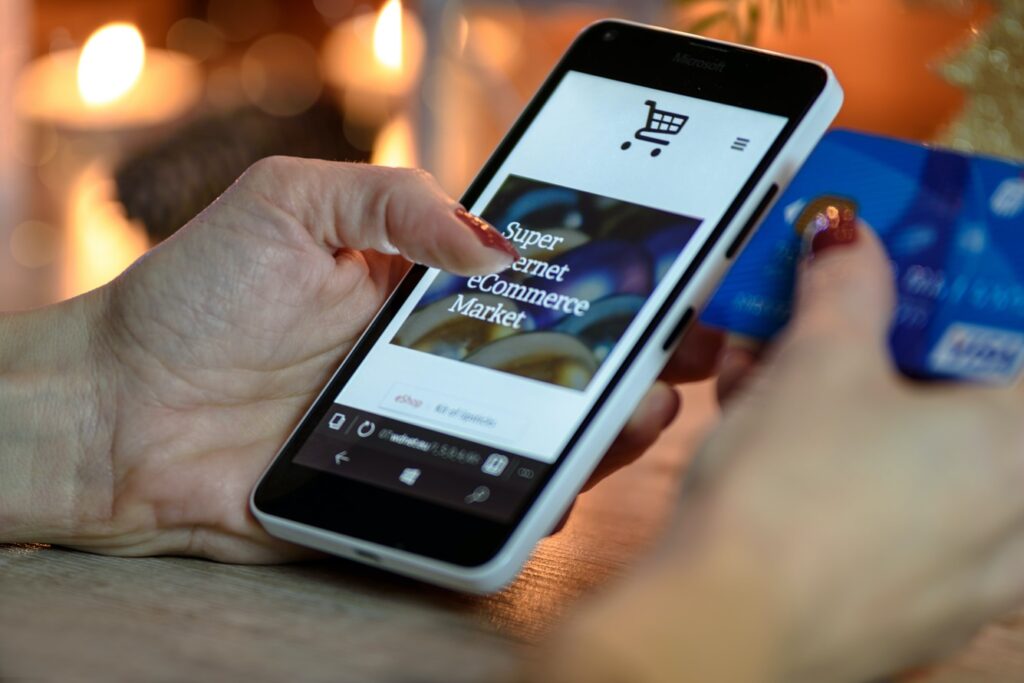
Build your online presence
With your domain name chosen and your website now published, it’s time to get more people talking about the brand.
Set up your social media channels. Platforms like Facebook and Instagram are valuable spaces to show off your products or services. Out of 57 million social media users in the UK, Facebook still leads as the most popular platform with 49 million users, followed by Instagram with 37.72 million. Being the owner of both, Meta now works to integrate these two channels: Meta Business Suite allows you to manage all of your activity on Facebook and Instagram, including social posts, ads, and (if you’re selling that way) the products you have on offer.
The strength of a business today is not just in what it sells but in how effectively it connects. Consumers are more likely to open their wallets for businesses that actively engage with them online, particularly through social media platforms. 80% of consumers are more likely to make a purchase when a brand offers personalised experiences.
Engagement on YouTube is a great way to promote your small business. Whether that’s product demos, tutorials, behind-the-scenes looks, or ‘Shorts’ to grab attention fast, users are four times more likely to use YouTube versus other platforms to find information about a brand, product or service. YouTube Ads can help you get more purchases, subscribers, and website hits. The other major option for video, TikTok, continues to grow in popularity. In fact, TikTok wins for overall user engagement with the average user spending over 27 hours per month on the platform — popular as it is with the younger demographic.
Start blogging. Posting a regular blog has the potential to generate 94% more links to your website. Tell your own story. It’s a way to engage your audience and build a community around their brand. This engagement will serve both to build brand loyalty and boosts visibility online, as quality content can significantly improve search engine rankings. For more, see our article – Blogging A-Z: Your Glossary Guide For Success
Collect customer reviews. Make them visible. Positive reviews can really enhance your business’s credibility and appeal. 98% of people read online reviews for local businesses, with 87% of consumers using Google to evaluate local businesses in 2022. Encourage satisfied customers to leave feedback, either on your own website, social feeds, or perhaps third-party review sites. Needless to say, reviews can sway potential customers’ decisions and improve your online reputation.
Lastly, consider the power of influencer marketing. Collaborating with influencers who align with your brand values can expose your business to a broader audience — tapping into their base of followers and building interest in your brand. If “influencer” seems a bit of a negative word, let’s broaden this to celebrity endorsement. For example, if your website sells food or drink, you could collaborate with a respected chef to market your culinary goodies; if you run a sportswear business, you could team up with a well-known fitness trainer or athlete to plug your apparel.
Search engine optimisation (SEO) is all about optimising your content for search engines in way that can help it appear higher in search results. Consider the most relevant keywords for your topic and create quality content that works for your audience’s needs (though don’t over do it!). Good SEO practices not only help to drive more traffic to your site; this can establish you as a reputable player in the industry. For a free tool, try Google Keyword Planner.
Wrapping up (and shipping off)
Starting an online business is a chance to do something exciting and rewarding. Find a niche you’re good with, know who you want to sell to, and plan the best way of doing so. To make it all work, you’ll need to plan well, understand the competition, and be ready to change with upcoming trends. If this is a side project, balance it with the other work you do. Set goals that you can actually reach and don’t overdo it. If you’re getting money from investors or taking out loans, be careful with your finances as they can really affect your business.
Amazing Website Builder tools make it easy to go it alone without the need for heavy IT skills. For added professionalism, pick up a business email address to match your domain name, and stay productive from anywhere in the world with Microsoft 365. Build your brand and engage your audience. With so many free tools and materials out there to help get started, it’s never been easier to make that business idea a reality. Go for it!


